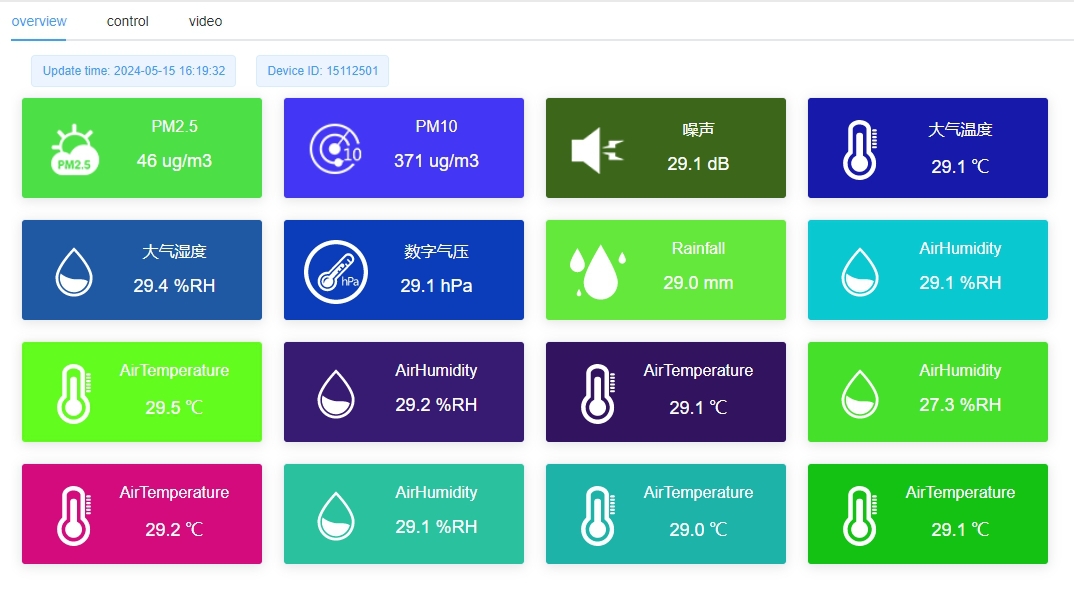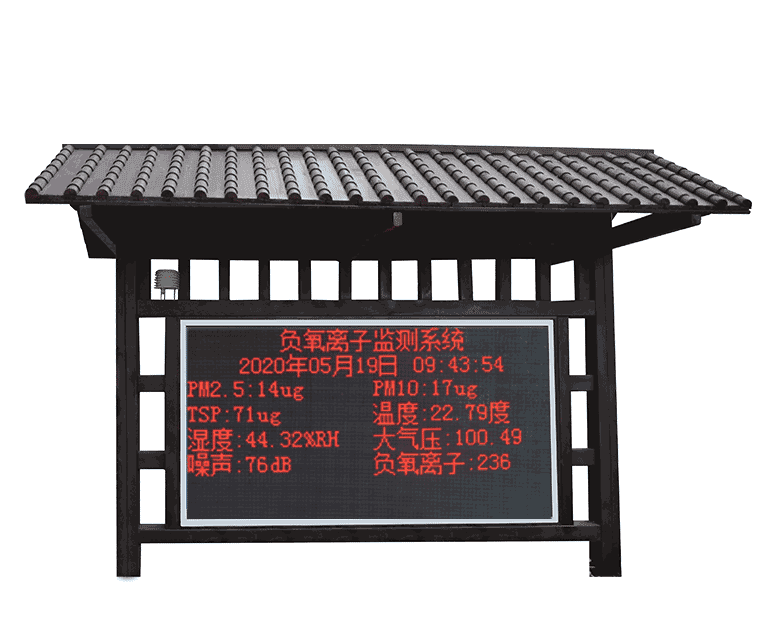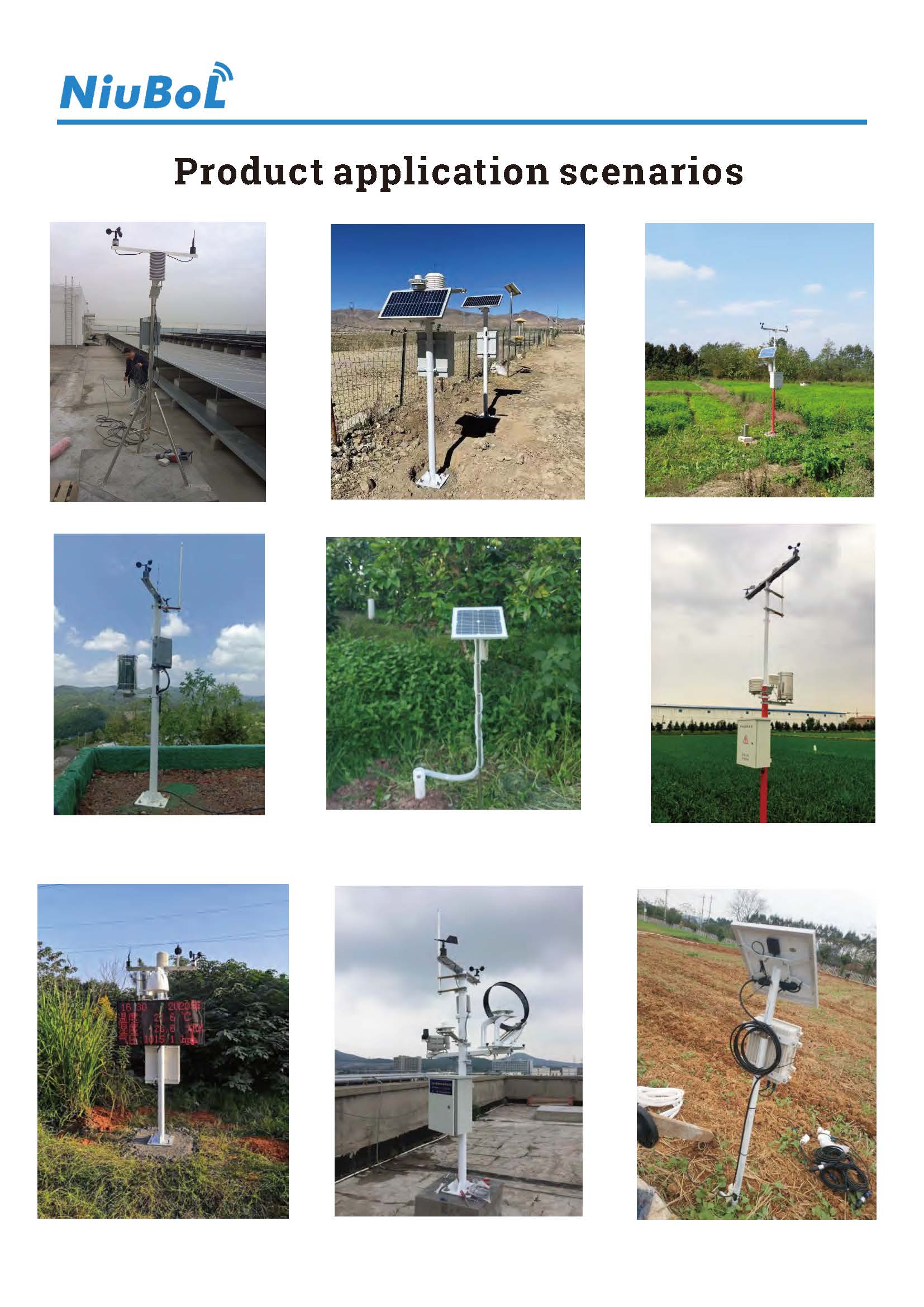

— Blogs —
—Products—
 Consumer hotline +8618073152920
Consumer hotline +8618073152920 WhatsApp:+8615367865107
Address:Room 102, District D, Houhu Industrial Park, Yuelu District, Changsha City, Hunan Province, China
Product knowledge
Time:2025-04-03 14:05:08 Popularity:33
With the continuous advancement of technology, meteorological observation plays an increasingly important role in weather forecasting, disaster response, agricultural production, and transportation safety. As a significant innovation in meteorological monitoring technology, automatic weather stations have become the fundamental component of the modern meteorological observation system due to their efficiency, precision, and all-weather capabilities.
An automatic weather station is an intelligent device that integrates data collection, processing, storage, and transmission. It automatically monitors and records various meteorological parameters such as temperature, humidity, air pressure, wind speed, wind direction, rainfall, and visibility. Through high-precision sensors, it senses changes in the surrounding environment in real-time, converts these physical quantities of meteorological elements into electrical or digital signals, which are then processed and stored by a data collector. The data is transmitted to meteorological centers or user terminals via wireless or wired methods.
The core function of an automatic weather station is to monitor and record key meteorological elements through various sensors, including temperature, humidity, air pressure, wind speed, wind direction, rainfall, and visibility. These sensors provide real-time environmental data for weather forecasting, disaster warning, agricultural management, and other fields. Below is a detailed introduction to these meteorological sensors:
Temperature sensors are used to measure real-time air temperature changes and usually employ thermocouples or thermistors as measuring elements. They convert the heat changes in the air into electrical or digital signals, which are then transmitted to the data collection system. Temperature is a fundamental data point in weather forecasting and is widely used in meteorology, agriculture, and transportation to help predict climate changes, crop growth, and transportation safety.
Humidity sensors are used to measure the amount of water vapor in the air, typically based on capacitive or resistive principles. Humidity data is critical in meteorological monitoring, especially in weather forecasting, agricultural irrigation, and environmental monitoring. It helps evaluate the moisture level in the air, affecting weather changes, precipitation, and crop growth.
Common types:
- Capacitive Humidity Sensor: Measures humidity-induced changes in capacitance, offering high precision.
- Resistive Humidity Sensor: Measures resistance changes due to air humidity and is often used for simpler monitoring needs.
Pressure sensors are used to measure changes in atmospheric pressure, usually employing piezoresistive or capacitive principles. Pressure changes are often a precursor to climate changes, especially when forecasting extreme weather events such as cyclones, typhoons, and storms. Pressure sensors accurately reflect weather trends and help meteorologists make precise weather predictions.
Common types:
- Piezoresistive Pressure Sensor: Offers high precision and is suitable for various meteorological observations.
- Capacitive Pressure Sensor: Measures pressure-induced capacitance changes and is suitable for environments with large pressure fluctuations.
Wind speed sensors measure wind speed, typically using cup or ultrasonic technologies. Wind speed is an important dynamic parameter in weather forecasting, particularly for predicting extreme weather events like storms and typhoons. Wind speed data is also critical for transportation safety, aviation management, and other fields to ensure safe operations.
Common types:
- Cup Anemometer: Calculates wind speed based on the relationship between the rotating cups and wind speed.
- Ultrasonic Anemometer: Measures wind speed using ultrasonic waves, offering high precision and being resistant to physical wear.
Wind direction sensors are used to determine the direction from which the wind is blowing, typically using wind vanes or ultrasonic technology. Wind direction data helps meteorologists analyze wind field changes, air flow trends, and, when combined with wind speed data, provides more accurate information for weather forecasting. This is crucial for climate research, environmental protection, and maritime applications.
Common types:
- Wind Vane: Indicates wind direction through rotational movement and is common in traditional weather stations.
- Ultrasonic Wind Direction Sensor: Measures wind direction by analyzing wind speed and direction, offering high precision and durability.
Precipitation sensors measure the amount of precipitation within a unit time, typically using rain gauges, thermocouples, or optical sensors. Precipitation data is crucial for weather forecasting and agricultural production, helping predict rainy seasons, droughts, floods, and offering irrigation recommendations for farmers.
Common types:
- Rain Gauge: Commonly used to measure precipitation by collecting rainfall and calculating the accumulated amount.
- Tipping Bucket Rain Gauge: An important tool for digital precipitation measurement, offering accurate timing, automatic data recording, and ease of data collection and processing.
Visibility sensors measure atmospheric visibility, typically based on optical sensor principles. These sensors analyze the scattering of light due to particles, fog, smoke, etc., in the air to calculate visibility. Visibility data is crucial for maritime, aviation, transportation management, and environmental protection, especially under adverse weather conditions, to provide real-time monitoring for transportation safety.
Common types:
- Optical Visibility Sensor: Measures visibility by analyzing the reflection and scattering of light by particles in the air.
- Laser Visibility Sensor: Uses laser beams to measure visibility by calculating the return time of the scattered laser light, offering higher precision and being suitable for complex weather conditions.
Temperature, humidity, pressure, wind speed, wind direction, precipitation, and visibility sensors are essential components of an automatic weather station. Together, they provide comprehensive, real-time meteorological data support. These sensors play a crucial role in weather forecasting, disaster warning, agricultural production, and also provide invaluable data support in transportation safety, environmental monitoring, and scientific research.
Automatic weather stations use advanced, high-precision sensors and data processing technologies to collect meteorological data with high accuracy. These devices monitor weather changes in real-time and transmit data to meteorological centers, providing reliable data for weather forecasting and research. The high timeliness of the data helps meteorologists detect weather trends and supports accurate weather predictions.
One of the key features of automatic weather stations is their intelligence and automation. The devices can operate unattended, automatically completing the tasks of data collection, processing, storage, and transmission, significantly reducing manual intervention and lowering labor costs. This automation greatly improves observation efficiency and ensures continuous data collection, especially in remote areas or extreme weather conditions.
Automatic weather stations are designed to operate stably in all weather conditions. Whether in freezing winters, scorching summers, or during heavy rain and strong winds, these devices continuously and effectively collect data. This ensures the continuity and completeness of data collection, which can reflect environmental changes in real-time, irrespective of time and weather conditions.
Automatic weather stations can be deployed flexibly based on different climate and geographical conditions, making them adaptable to diverse monitoring needs. Whether in urban, rural, mountainous, or marine environments, automatic weather stations can provide stable meteorological monitoring services. This allows them to offer reliable meteorological data support across various application scenarios.
Automatic weather stations can monitor multiple meteorological parameters simultaneously, including temperature, humidity, wind speed, wind direction, precipitation, and pressure. This provides comprehensive and detailed data support for meteorological research and climate analysis, helping to assess weather conditions, climate change, and its impact on the environment more accurately.

Automatic weather stations provide crucial data for weather forecasting and disaster warning systems. By monitoring atmospheric changes in real-time, automatic weather stations provide timely and accurate information to early warning systems, helping to predict extreme weather events such as typhoons, heavy rain, and blizzards. This information can assist the government and the public in taking preventive measures to reduce losses from natural disasters.
Agricultural production is highly dependent on weather conditions, and accurate meteorological data is vital for farmers to make informed decisions regarding agricultural activities. Automatic weather stations provide real-time meteorological information, helping farmers plan irrigation, fertilization, sowing, and other tasks. By monitoring key parameters such as soil moisture and temperature, farmers can adjust water and nutrient supplies to improve crop yield and quality. Timely weather warnings also help farmers avoid disasters, minimizing losses.

In the fields of aviation, shipping, railway, and road transportation, weather conditions directly impact safety. The precise meteorological data provided by automatic weather stations is crucial for ensuring transportation safety. By monitoring meteorological elements such as wind speed, visibility, temperature, and precipitation in real time, transportation authorities can develop more scientific transportation plans and emergency responses, reducing the impact of extreme weather on transportation and ensuring safe operations.
Automatic weather stations not only monitor weather conditions but also track environmental parameters such as air quality and visibility. Through this data, relevant departments can monitor environmental changes in real time and make informed decisions regarding environmental protection and management, taking effective measures to reduce pollution and ecological damage. Additionally, meteorological data is essential for formulating environmental policies and addressing climate change.

In the fields of meteorology, environmental science, and other disciplines, the data provided by automatic weather stations serves as valuable foundational material for scientific research. They assist researchers in analyzing weather changes, climate patterns, and extreme weather events. Furthermore, automatic weather stations are important tools for meteorological education, helping the public understand meteorological phenomena and raising awareness about weather-related issues.
Ongoing technological innovations in modern meteorological equipment provide powerful support for weather warning, disaster management, and environmental protection. High-precision sensors, intelligent algorithms, and unmanned automation have significantly enhanced the efficiency and accuracy of data collection, further advancing meteorological monitoring towards intelligence and precision.
Additionally, with the integration of drones, satellite remote sensing, and ground-based automatic weather stations, the application range and data accuracy of meteorological equipment continue to expand. These technological breakthroughs make weather monitoring more comprehensive and precise, helping to identify disaster risks earlier and promoting scientific management.

Conclusion
Automatic weather stations, as the core equipment of modern meteorological observation, provide strong technical support for weather forecasting, agricultural production, transportation safety, environmental protection, and other fields due to their high precision, intelligence, and all-weather capabilities. With the continuous advancement of technology, meteorological equipment will become increasingly powerful, helping various industries better cope with climate change and extreme weather challenges, contributing to global sustainable development.
Prev:Meteorological Stations for Photovoltaic Power Plants
Next:Applications of Meteorological Monitoring Equipment in Various Industries
Related recommendations
Sensors & Weather Stations Catalog
Agriculture Sensors and Weather Stations Catalog-NiuBoL.pdf
Weather Stations Catalog-NiuBoL.pdf
Related products
 Combined air temperature and relative humidity sensor
Combined air temperature and relative humidity sensor Soil Moisture Temperature sensor for irrigation
Soil Moisture Temperature sensor for irrigation Soil pH sensor RS485 soil Testing instrument soil ph meter for agriculture
Soil pH sensor RS485 soil Testing instrument soil ph meter for agriculture Wind Speed sensor Output Modbus/RS485/Analog/0-5V/4-20mA
Wind Speed sensor Output Modbus/RS485/Analog/0-5V/4-20mA Tipping bucket rain gauge for weather monitoring auto rainfall sensor RS485/Outdoor/stainless steel
Tipping bucket rain gauge for weather monitoring auto rainfall sensor RS485/Outdoor/stainless steel Pyranometer Solar Radiation Sensor 4-20mA/RS485
Pyranometer Solar Radiation Sensor 4-20mA/RS485
Screenshot, WhatsApp to identify the QR code
WhatsApp number:+8615367865107
(Click on WhatsApp to copy and add friends)